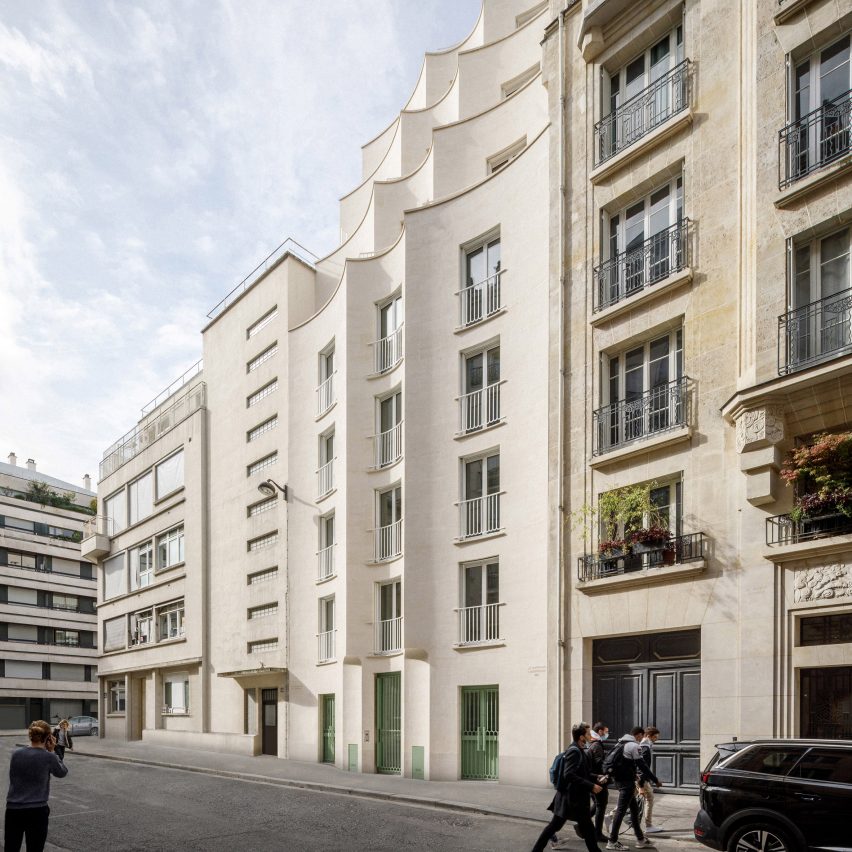
French architect Jean-Christophe Quinton has decorated a Parisian social housing project built on the site of a demolished police station with a curvy limestone facade.
The housing units are located at 12 Rue Jean-Bart in Paris’ wealthy sixth arrondissement, one of the city’s central districts, and were designed to destigmatise social housing by giving it an appealing aesthetic.
Built for a total of €2 million, the project contains eight apartments ranging in size from studios to two-bedroom units of 68 square metres. The building’s scalloped stepped facade forms layers of peaks that recall the look of waves or meringue.
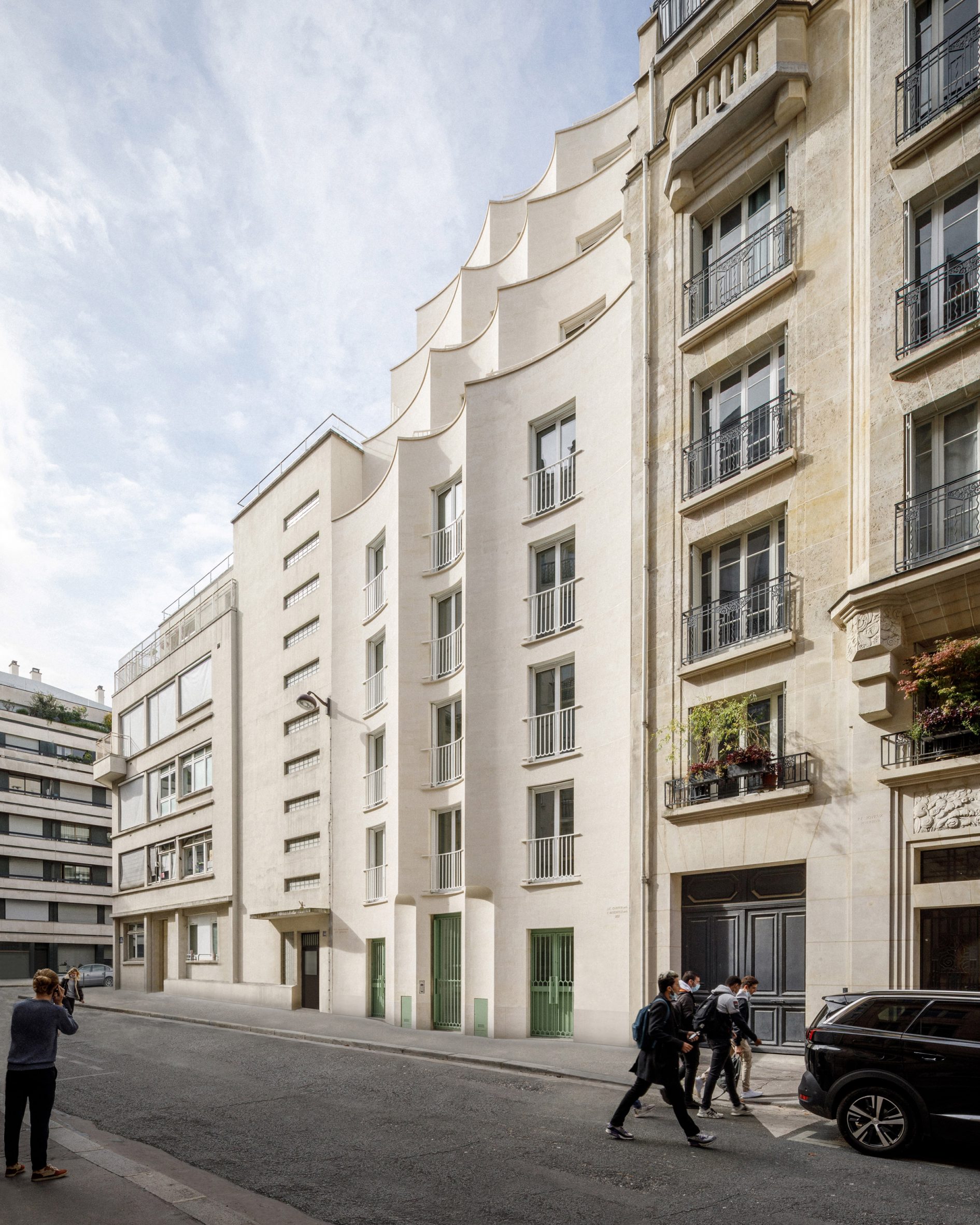
The site had previously held a single-storey police station, and Quinton, who was assisted on the project by architect Charles Rosenfeld as the project leader, said he aimed for the new building to find a balance between having a discreet presence and an intentionally contemporary architectural style.
“Conceptually, the project aims to bring up its architectural quality to the same level as that of its refined neighbours, without any discrimination and with fewer financial resources,” Quinton told Dezeen.
“The use of solid limestone and some distinctly Parisian architectural elements, paired with the attentively studied window dimensions, allow the building to fit in with its local environment.”
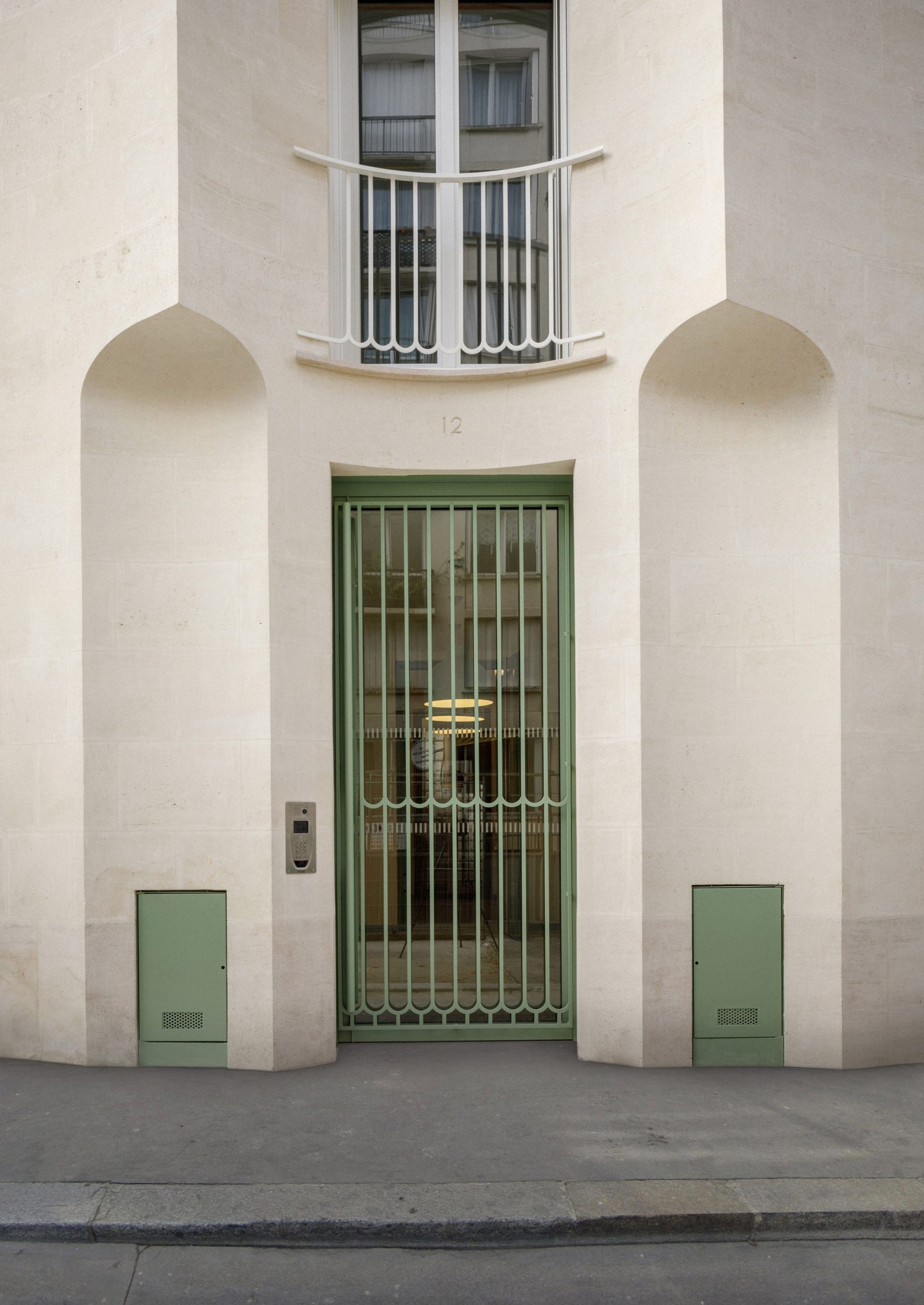
“At the urban scale, the project blends and disappears into the built landscape,” he continued. “At the building scale, its strong presence and architectural identity add value to social housing.”
The creamy white limestone used for the facade comes from the nearby Vassens quarry and was cut into smoothly curved pieces with the help of a digital model to optimise the cut-out placement and reduce material waste.
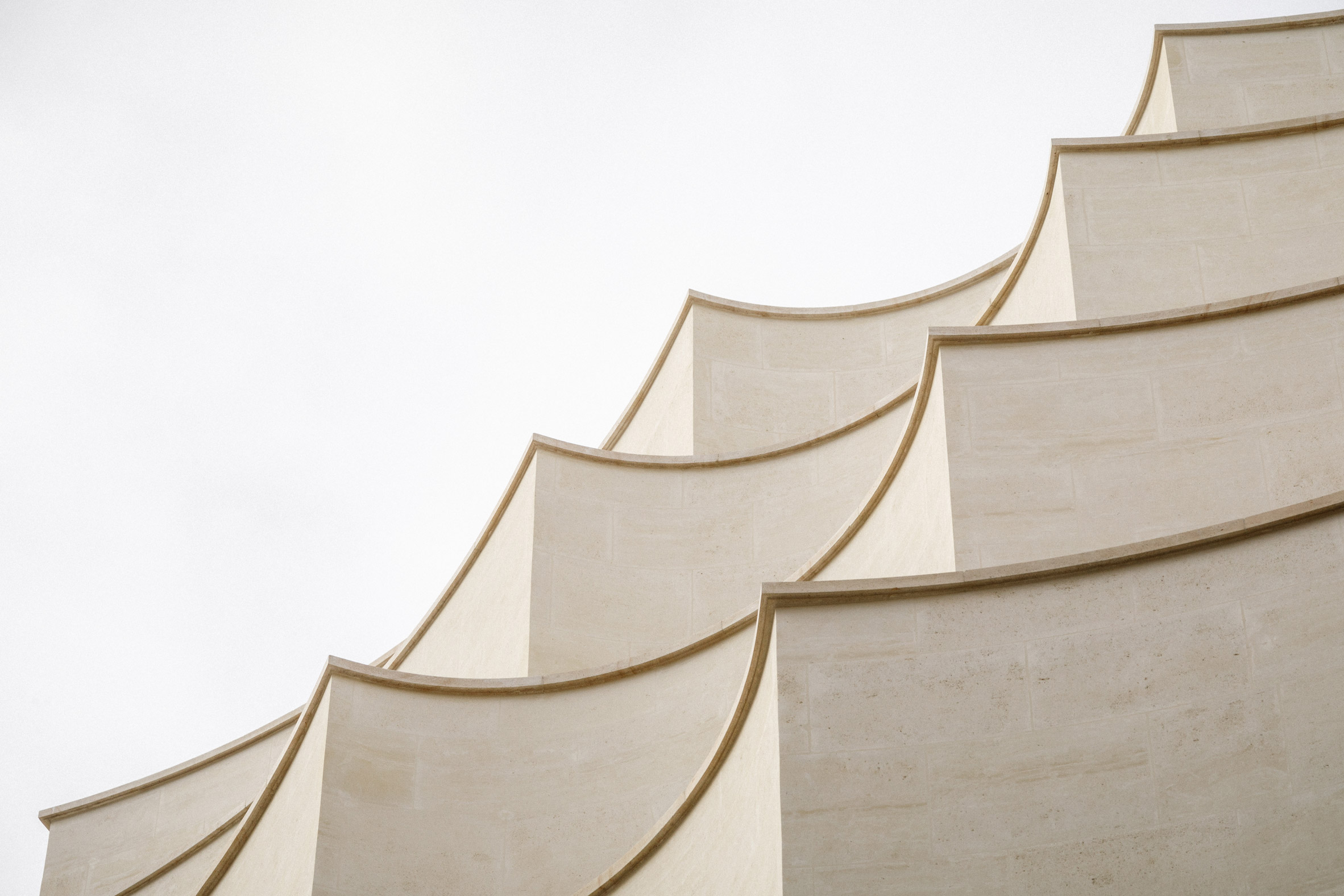
Due to the effects of perspective, the facade appears more curved at the top than along its front, which helped Quinton to give the building a strong identity while still blending it in with the surrounding architecture.
He also made only the first five storeys visible from street level, while a further three storeys are progressively stepped back, giving the building a less imposing presence and blocking less light.
The flats on the top three floors benefit from slender outdoor terraces as their indoor space shrinks.
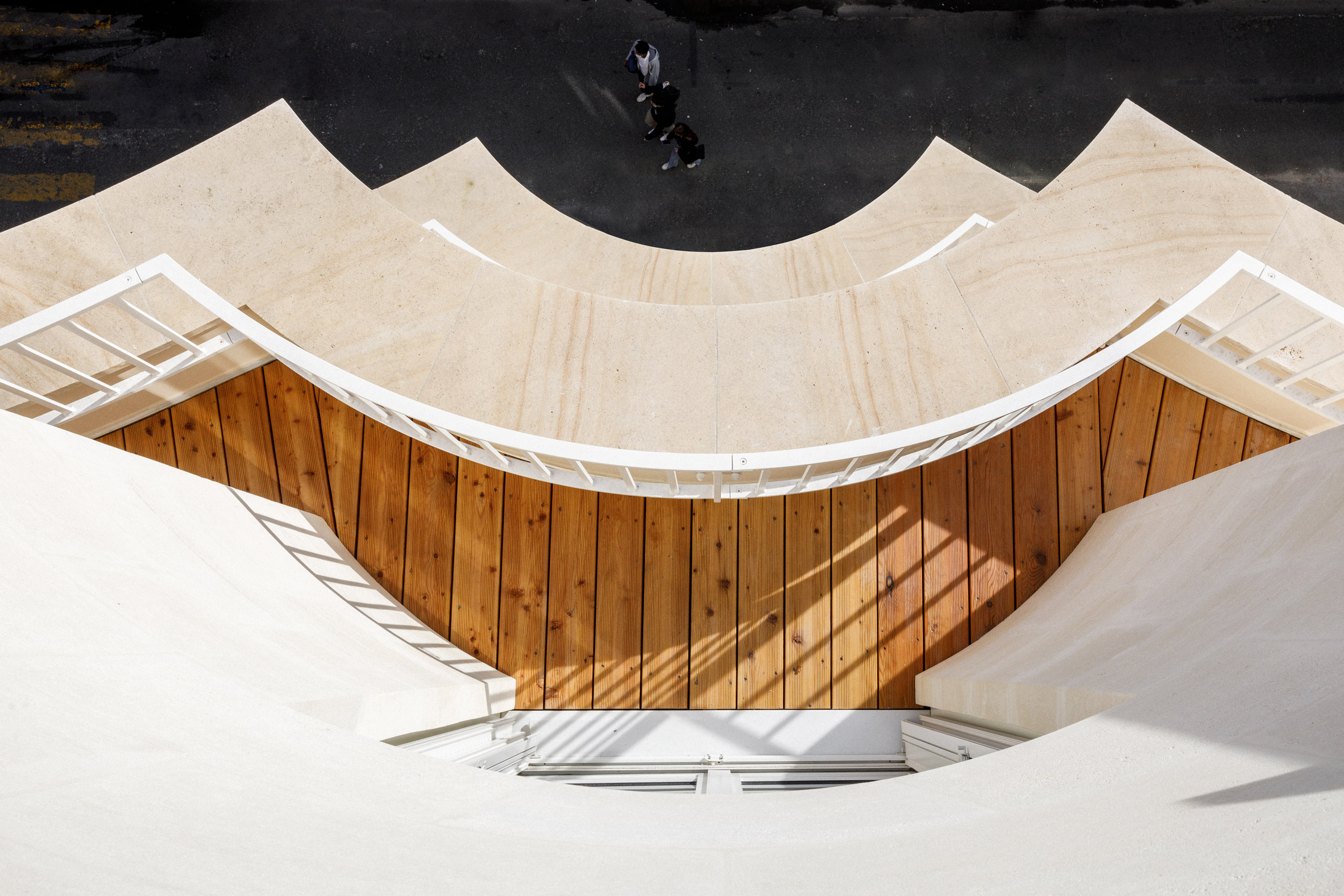
The facade otherwise has a minimalist appearance, with an intentionally spare use of detail to give it a contemporary look.
The building’s curves are subtly echoed in the design of the white Juliet balcony balustrades and pale green door grills.
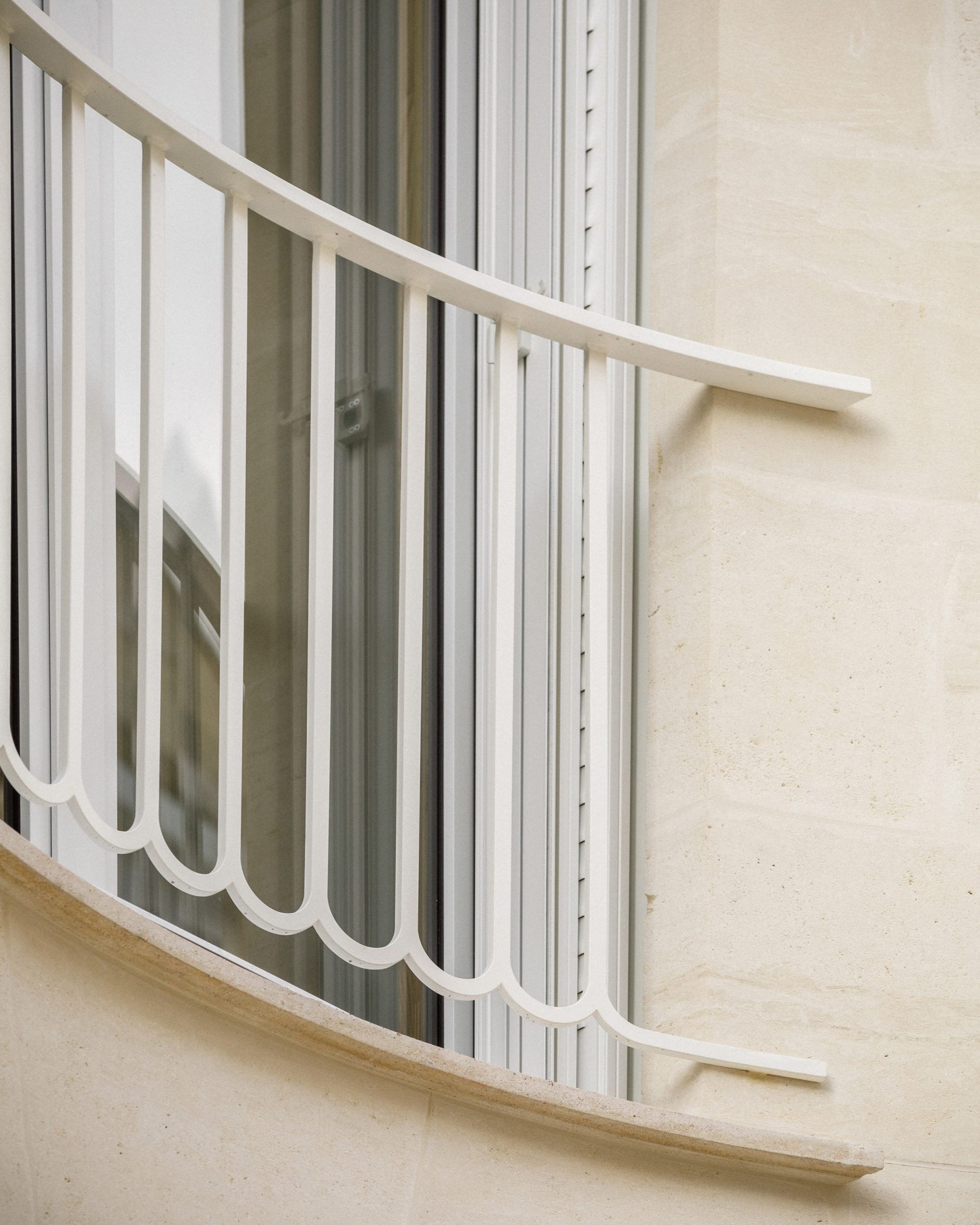
Inside, a concrete spiral staircase at the back of the building leads to one apartment on each floor except for the fifth, which has two smaller studios.
Quinton developed the floor plan so that there would be an uninterrupted connection from the stairs through the landing and into the entrance hall and either the living room or a bedroom in every apartment, allowing light to flow through and views of the city to be emphasised.
“This layout renews the Parisian tradition of the connection between the picturesque universe of the courtyard and the more homogeneous one of the street,” said Quinton.
In total, the building covers 550 square metres. The interiors feature a warm palette of materials, selected to create a calming environment.
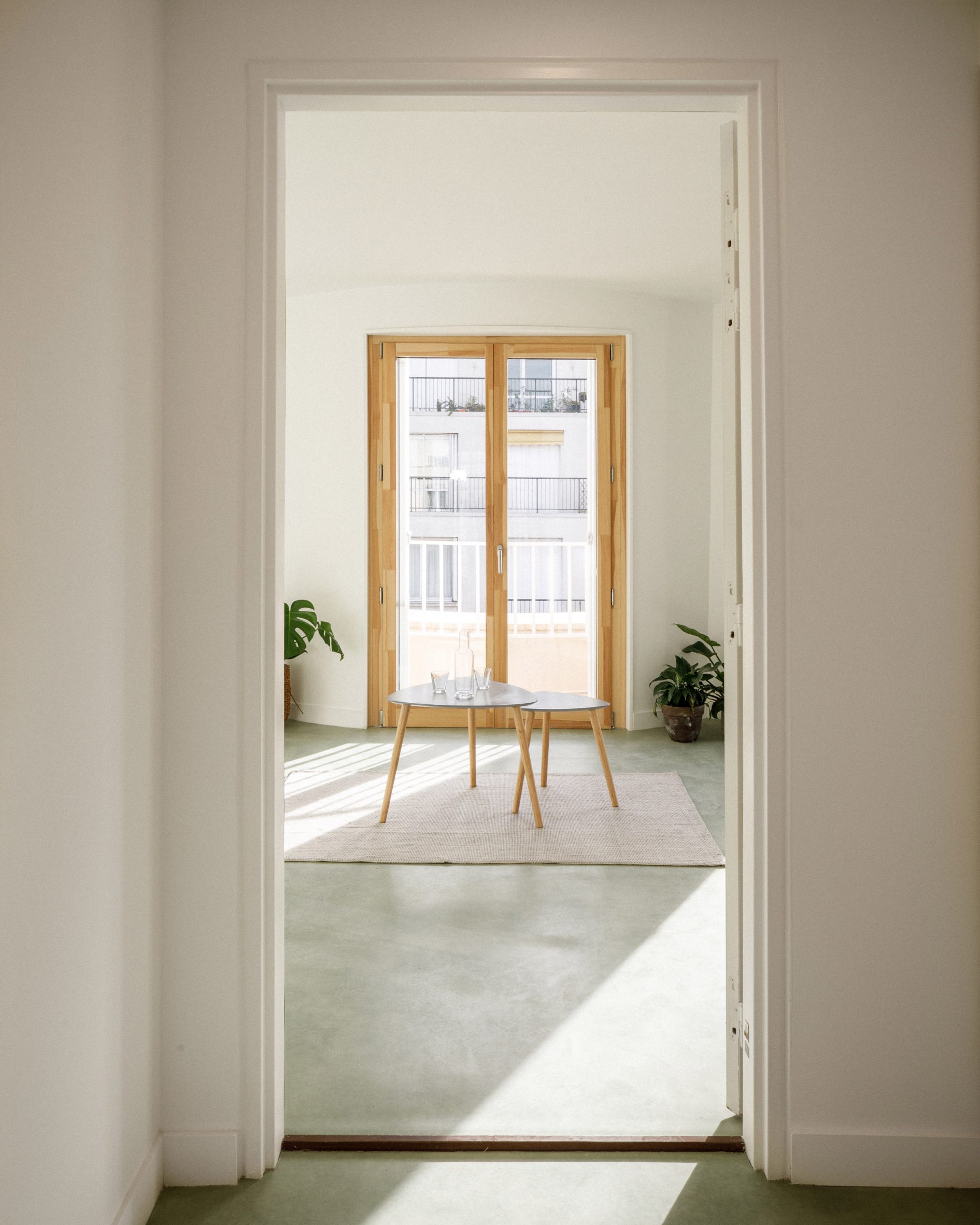
The architect preferenced local materials, such as the soft green ogee floor tiles in the lobby, which come from artisans in Normandy.
Quinton founded his architecture office in 2003 and also serves as the director of the National Architecture School of Versailles.
Paris’s mayor, Anne Hidalgo, has made housing a priority since her election in 2014, and is currently adding 7,000 units of new social housing a year, up from roughly 5,000 a year under the previous administration.
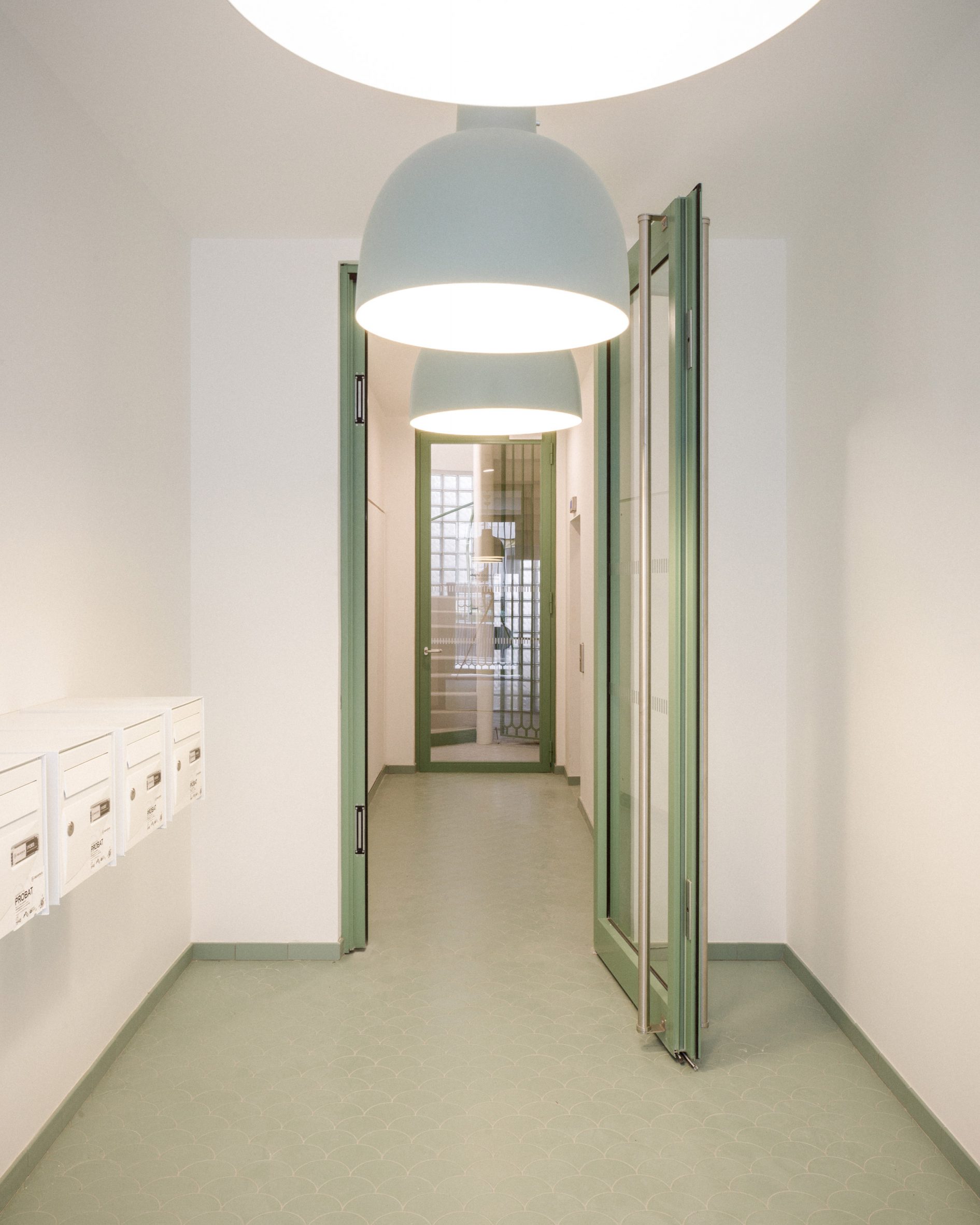
This is achieved through a combination of new construction, conversion of existing buildings and buying apartment to take them off the private market.
Other social housing projects in the French capital include O4A by Brisac Gonzalez and Antoine Régnault, which has units stacked over a school, and a hempcrete building by Barrault Pressacco in the 18th arrondissement.
The photography is by Florent Michel.
The post Scalloped facade fronts Parisian social housing block by Jean-Christophe Quinton appeared first on Dezeen.
